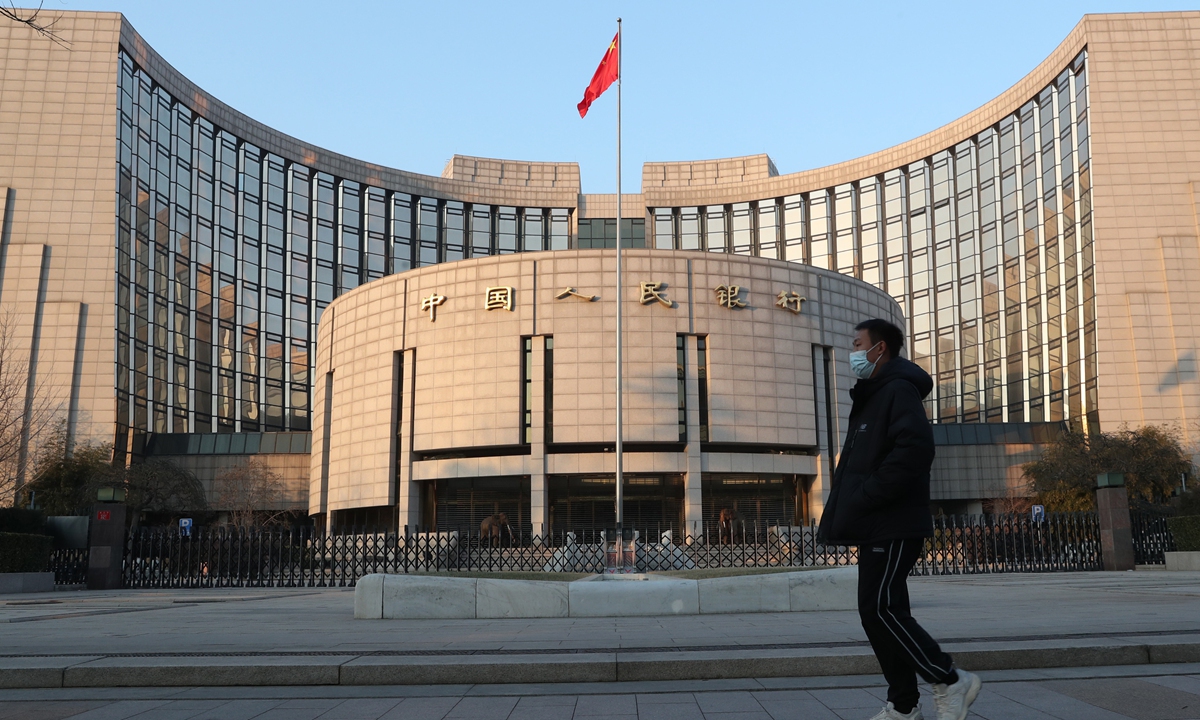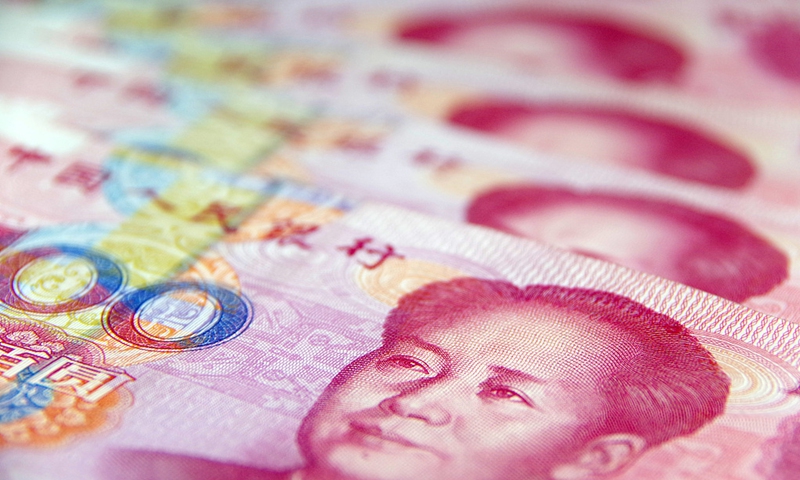China to cut RRR by 25 bps to keep liquidity reasonably sufficient, ‘unleashing economic vitality in Q4’

China's central bank Photo: CFP
China's central bank on Friday announced a universal 25 basis points reduction in financial institutions' reserve requirements, three days after the State Council, the country's cabinet, alluded to the use of the monetary policy tool as part of pro-growth measures.
The second reserve requirement ratio (RRR) cut in the year is expected to boost market confidence and the vitality of the economy, shore up the property sector and unleash liquidity into investment and consumption in the fourth quarter, which is vital to all-year growth, experts said.
The universal RRR cut will take effect on December 5 and pump out about 500 billion yuan ($69.72 billion) of long-term funds to keep liquidity reasonably sufficient, the People's Bank of China (PBC), the country's central bank, said in a statement on its website.
The PBC said that the RRR cut will increase support for the real economy, as well as promote the high quality and reasonable quantitative growth of the economy.
The move is also aimed at supporting smaller enterprises hurt by the epidemic and reducing the comprehensive financing cost of the real economy, the PBC said.
It is estimated that the move will reduce financial institutions' capital costs by about 5.6 billion yuan per year, the central bank said.

RMB Photo:VCG
This is the second time the RRR has been cut in a year. The previous reduction, a 25 basis points cut to financial institutions' reserve requirements, was in April when the central bank released about 530 billion yuan in long-term capital.
The monetary move is a timely measure to fend off liquidity woes and is expected to funnel optimism into the market, experts said, citing the fallout of recent big swings in the bond market amid a wider gap between Chinese and US interest rates.
The RRR cut is aimed at boosting market confidence and the vitality of the economy, Yang Delong, chief economist at Shenzhen-based First Seafront Fund Management Co told the Global Times on Friday.
"Since the start of this year, the Chinese economy has navigated multiple headwinds, especially the repeated epidemic outbreak. The RRR cut will allow financial institutions to provide more financial support to enterprises, helping stabilize the stock and bond markets and boost market confidence," Yang said.
China's economy managed to walk out of a V-shaped recovery in the third quarter, and the RRR cut will further unleash vitality into the fourth quarter, experts said.
The GDP of the world's second largest economy grew by 3.9 percent year-on-year in the third quarter, according to data from National Bureau of Statistics, compared with 0.4 percent year-on-year growth in the second quarter, following an unexpected outburst of COVID-19 cases in Shanghai and other cities.
"Now is a valuable window to boost economic growth. The RRR cut will help promote sustained economic recovery in the fourth quarter and help the country to strive for the best economic outcome," Yang said.
The RRR cut is timely and fully in line with market expectations, Chen Jia, an independent analyst on global strategy told the Global Times, adding that it will play a key role in stabilizing expectations and investment, especially in the fourth quarter.
"It is expected to further shore up the total investment, encourage consumption and stabilize foreign trade and foreign investment amid the risk of economic stagnation in the West," Chen said.
The RRR cut was signaled in a meeting of the State Council on Tuesday amid efforts to ramp up financial support for the real economy.
The meeting stressed that economic activity in the fourth quarter "is crucial for full-year growth" and that now was a "critical time" to consolidate the upward foundation of the economy.
It vowed to fully implement a package of policies and follow-up measures to stabilize the economy and support for the property sector.
Efforts should be made to support rigid housing demand and the needs of those who are upgrading living condition, accelerating lending to guarantee housing delivery, and encouraging commercial banks to make new loans to ensure that the real estate market develops soundly, according to the meeting.
The RRR cut will have a significant impact on the real estate industry, and also contribute to credit support for real estate development and individual mortgage loans, Yan Yuejin, research director at Shanghai-based E-house China R&D Institute, told the Global Times on Friday.
"After the RRR cut, commercial banks' ability to extend credit is bound to be enhanced, which will help promote the easing of bank credit policies," Yan said.
While the RRR cuts provide relief to ensure stable economic growth, especially for the real estate market, China's monetary policy will refrain from bringing a deluge of strong stimulus measures, Dong Shaopeng, a senior research fellow at the Chongyang Institute for Financial Studies at Renmin University of China, told the Global Times on Friday.
"Instead, it will be implemented to satisfy targeted demands of the real economy and to enhance financial support for key areas and weak links," Dong said, adding that there is still plenty of room for China to implement monetary policies.
The monetary moves coupled with targeted COVID-19 prevention and control measures are expected to help economic recovery and see the funds having a real effect, Dong said.



